Click on images to enlarge
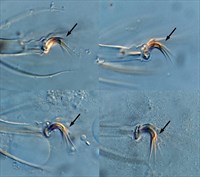
Fig. 1. Tetranychus evansi adult female (non-type; Australia) - detail of claws I (upper) and IV (lower) (arrows indicate minute dorsal spur).
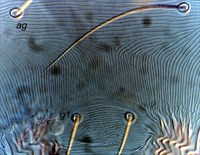
Fig. 2. Tetranychus evansi adult female (non-type; Australia) - detail of pregenital striae.
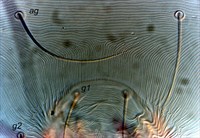
Fig. 3. Tetranychus evansi adult female (non-type; Australia) - detail of pregenital striae.
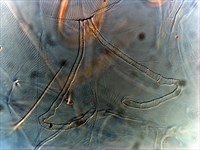
Fig. 4. Tetranychus evansi adult female (non-type; Australia) - detail of peritreme.
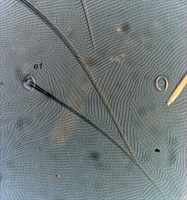
Fig. 5. Tetranychus evansi adult female (non-type; Australia) - detail of dorsal striae between setae e1-e1.
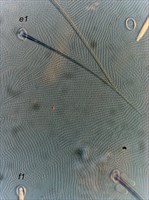
Fig. 6. Tetranychus evansi adult female (non-type; Australia) - detail of dorsal striae between setae e1-e1 and f1-f1.
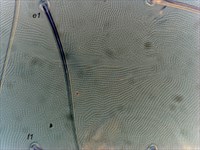
Fig. 7. Tetranychus evansi adult female (non-type; Australia) - detail of dorsal striae between setae e1-e1 and f1-f1.
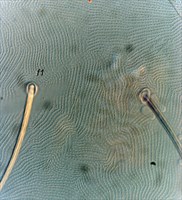
Fig. 8. Tetranychus evansi adult female (non-type; Australia) - detail of dorsal striae between setae f1-f1.

Fig. 9. Tetranychus evansi adult female (non-type; Australia) - detail of dorsal striae between setae f1-f2.
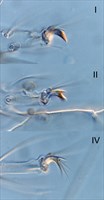
Fig. 10. Tetranychus evansi adult male (non-type; Australia) - detail of claws I, II, IV.

Fig. 11. Tetranychus evansi adult male (non-type; South Africa) - detail of claws I-IV.
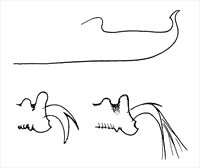
Fig. 12. Tetranychus evansi original description - detail of adult male aedeagus and empodium I; detail of adult female empodium I (after Baker & Pritchard 1960: 542).

Fig. 13. Tetranychus evansi adult male (non-types) -detail of aedeagus of specimens from Australia (one individual at different focal points - Fig. 14) and South Africa (two different individuals - Fig. 15).
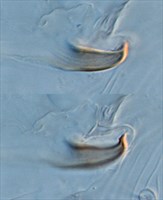
Fig. 14. Tetranychus evansi adult male (non-type; Australia) - detail of aedeagus at two focal points.

Fig. 15. Tetranychus evansi adult male (non-type; South Africa) - detail of aedeagus (two different individuals).
Material examined
non-types
Taxonomy
Subfamily Tetranychinae
Tribe Tetranychini
Distribution
This species was originally described from *Mauritius, but it is now widespread across the planet, including +Australia.
There is evidence suggesting that the species originates from South America (Gutierrez and Etienne, 1986).
Taxonomy Changes
Synonymy - Tetranychus takafujii Ehara and Ohashi (2002) by Gotoh, et al. (2009: 247)
Diagnosis
Female
- empodia I-IV each with short to minute dorsal spur above proximoventral hairs (Fig. 1)
- tarsus I with sockets of no setae proximal to, and sockets of four tactile setae overlapping, the socket of the proximal duplex seta [note that there can be some variation in the position of the tactile setae, with the sockets of up to three tactile setae proximal]
- tarsus II with the sockets of three tactile setae and one solenidion proximal to, and three tactile setae overlapping, the socket of the duplex seta
- pregenital striae longitudinal (can be slightly weaker medially) (Figs 2, 3)
- peritreme with recurved hook (Fig. 4)
- dorsal striae between dorsal setae e1-e1 and f1-f1 forming diamond pattern = striae between e1-e1 longitudinal or irregular/oblique (Fig. 5), striae between e1-f1 transverse (Figs 6, 7), striae between f1-f1 longitudinal (Fig. 8)
- dorsal striae between dorsal setae f1-f2 irregular, but mostly longitudinal becoming transverse (Fig. 9)
- ventral striae without lobes
- body pale to dark orange, or brown, with paler orange legs and gnathosoma when alive
Male
- empodia I-II each with strong dorsal spur, above fused proximoventral hairs that form a ventral claw (Figs 10, 11)
- empodium III-IV similar to that of female with strong dorsal spur above proximoventral hairs (Figs 10, 11)
- aedeagus: original illustration of aedeagus is different to other specimens identified as T. evansi
- original illustration (Fig. 12): aedeagus dorsally directed, with long narrow neck and distinct knob; anterior projection of knob short broad triangular; posterior projection elongate triangular, tapering to point, with tip bent slightly to posterior; dorsal margin of knob at 45° angle to shaft; dorsal margin of shaft paralell with ventral margin
- aedeagus directed dorsally, with short stout neck and small distinct knob; anterior projection of knob short broad triangular; posterior projection narrow triangular tapering to blunt or sharp point, with tip slightly bent ventrally; dorsal margin of knob at 40° angle to shaft; dorsal margin of shaft more or less parallel or at 30° angle to ventral margin of shaft; shaft long (Figs 13-15)
- yellow to orange when alive
Hosts
Recorded on many species of plant from a broad range of familes, but the species is most strongly associated with the Solanaceae. The type host is tomato, *Solanum lycopersicum (Solanaceae).
Recorded hosts include species from the following familes: Amaranthaceae, Asteraceae, Brassicaceae, Convolvulaceae, Malvaceae, Poaceae, and Solanaceae.
Similar Taxa
Tetranychus marianae McGregor 1950 (see deMoraes et al. 1987)
References
+http://www.pir.sa.gov.au/__data/assets/pdf_file/0005/299471/Fact_Sheet_-_Tomato_Red_Spider_Mite_-_October_2017.pdf
*Baker, E.W. and Pritchard, E.A. (1960) Tetranychoid mites of Africa. Hilgardia 29(11): 455-574
deMoraes, G.J., McMurtry, J.A. and Baker, E.W. (1987) Redescription and distribution of the spider mites, Tetranychus evansi and T. marianae. Acarologia 28: 333-343
Ehara, S. and Ohashi, K. (2002) A new species of Tetranychus (Acari: Tetranyhidae) from the Kinki District, Japan. Acta Arachnologica 51: 19-22
Gotoh, T., Araki, R., Boubou, A., Migeon, A., Ferragut, F. and Navajas, M. (2009) Evidence of co-specificity between Tetranychus evansi and Tetranychus takafujii (Acari: Prostigmata: Tetranychidae): comments on taxonomic and agricultural aspects. International Journal of Acarology 35: 485-501.
Gutierrez, J. and Etienne, J. (1986) Les Tetranychidae de l ile de la Reuion et quelques-uns de leurs predateurs. Agronomie Tropicale 41: 84-91
Migeon, A. and Dorkeld, F. (2006-2017) Spider Mites Web: a comprehensive database for the Tetranychidae. http://www.montpellier.inra.fr/CBGP/spmweb
Copyright © 2018. All rights reserved.